Introduction
Sheets of torrential rain pelted the group as lightning flashed in the dawn. We headed to the steep lava spur we would have to climb that morning, timing the flashes and sounds to gauge the lightning’s distance, “One, one thousand, two, one thousand, three, one thousand… one kilometer away.” The decision to break camp at dawn was an easy one: a cluster of tents in the open desert is no refuge in thunder. The storm rapidly grew closer as a stiff westerly off the Red Sea brought the squall inland. Then we were in it. We labored forward but were repeatedly pushed back by the force of the gale as thunder bolts struck the ground a few hundred meters away. We knew then that this would be no ordinary desert hike.
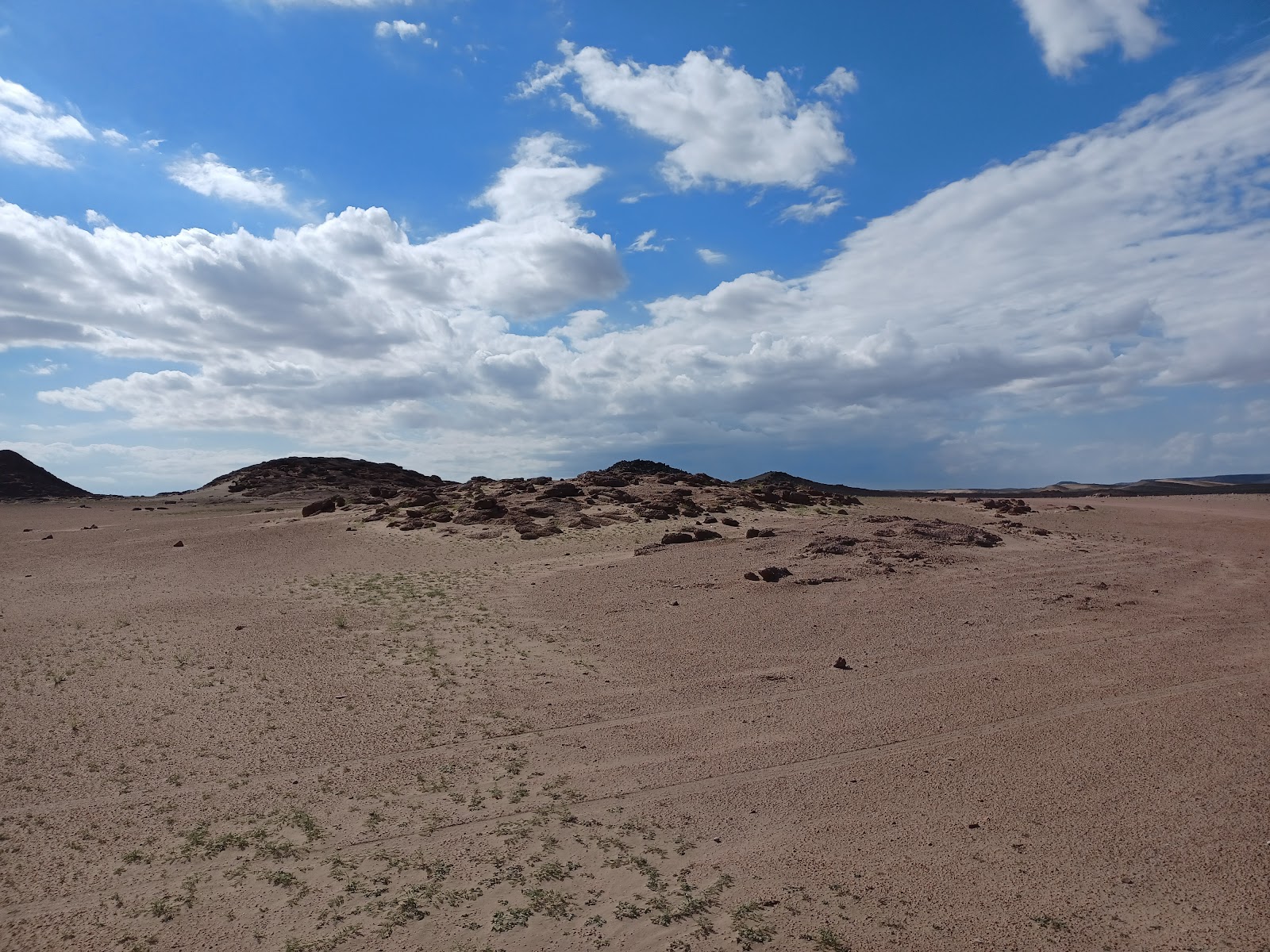
Just in time we managed to take shelter in an empty farmhouse, soaked minutes into that day’s twelve-hour march. The roughly 300 mile (482 km) off-trail desert crossing across the Hejaz in the Arabian peninsula was continuously flanked by lava tracts, mountains, and craggy hills. We were advised against using camels and cameleers because of the difficulty of crossing the occasional highway or railway. With scanting present-day knowledge of wells, we would have to resupply in town, and because we were on foot, water resupply points would have to be no more than 2 or 3 days apart. We decided on a 17-day foot journey that we hoped would provide some pace and rigor and, in the vast cleanness of the desert, would ultimately provide some spiritual insights.
For the Purification of Oneself
The spiritual benefits of a hike often come weeks and months later. During the hike itself one is occupied with the more prosaic physical aspects of basic survival: water, food, fatigue, and exposure to the elements.
One is often thinking beyond the usual simple binaries typical of modern life: hot or cold, hungry or full. Rather, one is thinking about countless nuanced variables. For example, how the summation of those dark clouds on the horizon, the direction of the wind, and our compass bearing towards the mountains forces us to think about flash flooding in the wadis when we pitch camp tonight. Or given this morning’s warming temperature so-and-so should preemptively apply breathable tape to the hotspot on his toe to avoid blistering, or how we need to improve ventilation tonight to reduce condensation next to these pools.
However, for purification of the self, there are few things better than a hike. The rigors throw into sharp relief shortcomings in one’s character and become a means for sublimating the lower self: in the extremity of narrow circumstance when group safety is paramount, annoyance must turn to cheerfulness, pride to humility, cowardice to courage, and anger to forbearance. Newcomers soon learn to accept with equanimity the howling of wolves at night, the feeling of thirst when an unexpected fence blocks a resupply point, encounters with packs of dogs, and the suffering of blisters. No hiker expects to be coddled, nor can they be frozen by the events of the day.
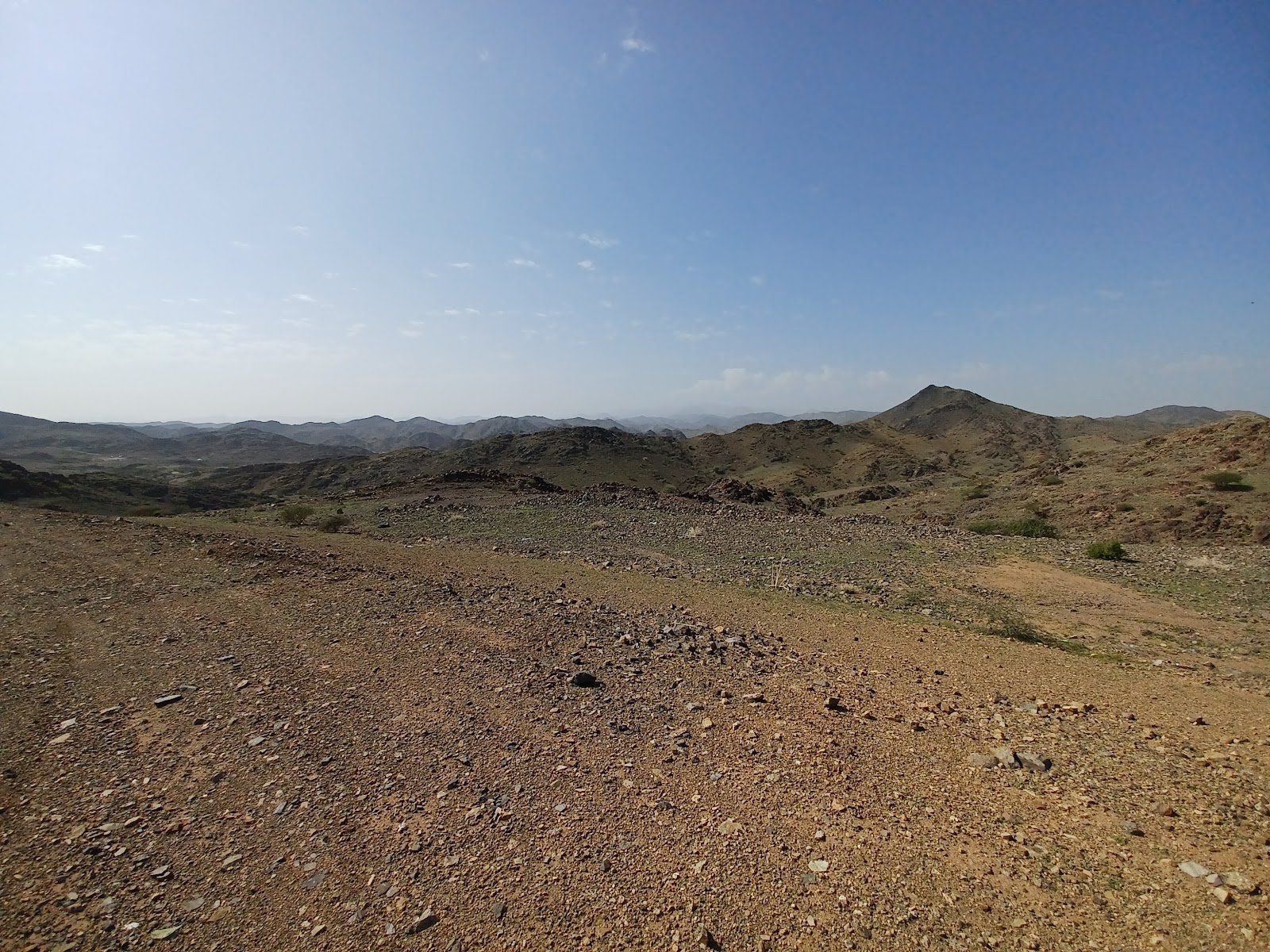
Boxed inside the four comfortable corners of the small screen, car, cubicle, and house, character often atrophies. Moreover, we unthinkingly accept the many absurdities of modern monocultures as they slowly bend our nature. Repeated over months and years, across generations, it is no wonder that modern man is now a mere shadow of his former self, far from nature and far from his own nature. One researcher termed the modern malady of disconnection from the natural world Nature Deficit Disorder.
As a means for reclaiming one’s primal nature, there are few temporary expedients—truly effective pattern interruptions—more powerful than a distant walk of a few days somewhere natural and remote. Hiking in beautiful, desolate surroundings, living on nothing but what one carries, being vulnerable to the often terrible vagaries of weather, and making but human-scale progress in the wide expanse of a rich divine tapestry, are all a means to pass beyond the created world into the presence of a higher power.
Desert Routines
We experienced a variety of terrain and weather conditions that included baking basalt fields reflecting heat, lava tracts impassable except by traversing hand-and-foot over boulders, miles of mud so soft that a misstep could pull a shoe off, windswept gravel plains gray in the gloaming, sandstorms so fierce that we were forced to put our sunglasses on before sunrise, hours of dune chains so maze-like that the group stayed together to avoid losing a companion, and camps pitched on the lee side of berms as cold winds pounded our shelters under brooding clouds on desolate flats. But it was not all hardship. There were broad swards of lush green, cool date palm groves, and shaded pools of fresh rainwater in which to bathe.
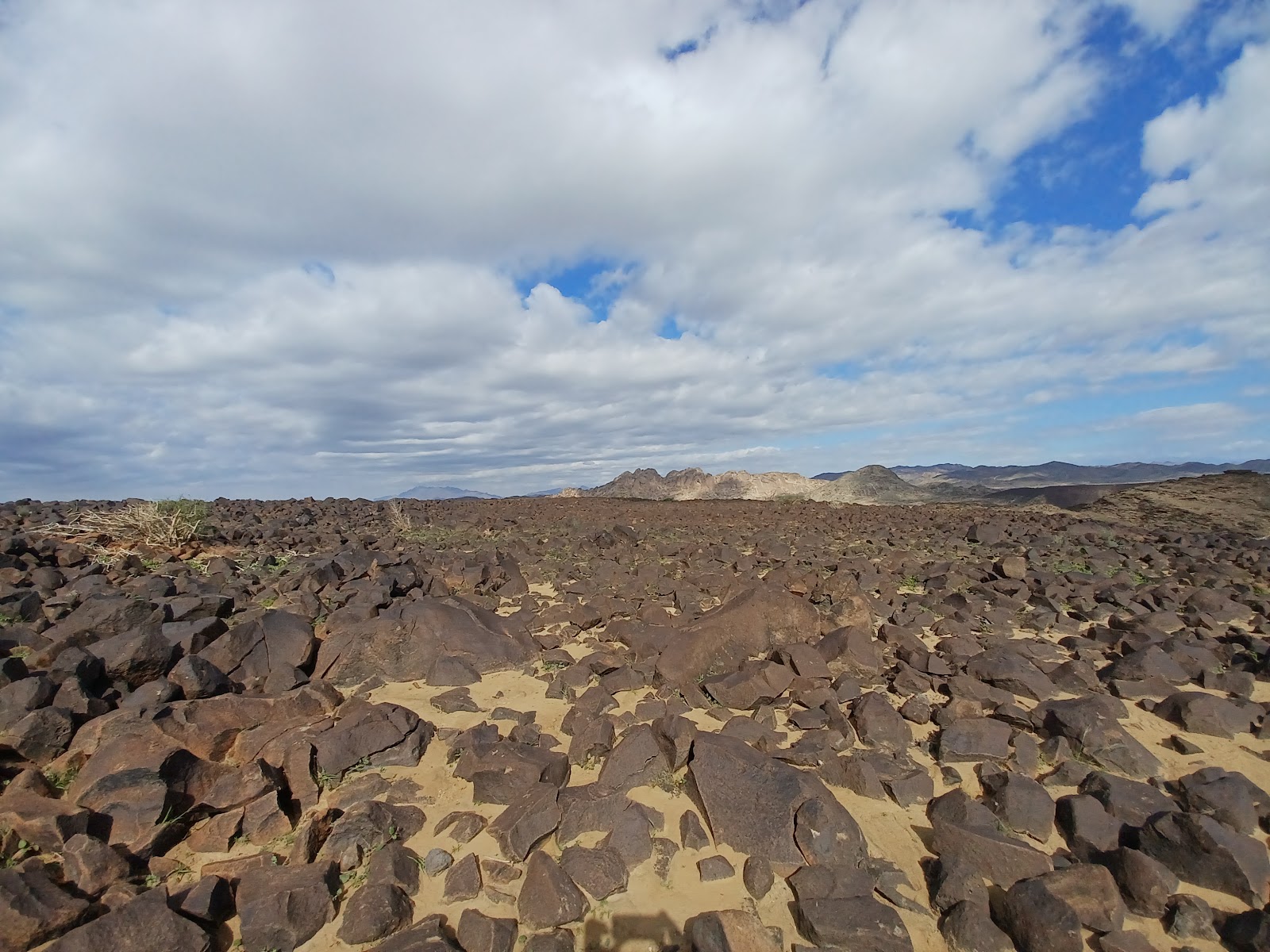
Such is the blessing of walking, that elemental and irreducible of all primal activities, that time expands. Days feel like weeks, and weeks like months. The group sometimes walked in two’s or three’s, but more often we would string out across a couple of hundred meters, alone in the desert until the next break. We were under open cloudless sky or a canopy of stars, in intimate contact with the texture of the land, across vast clean sands stretching to the horizon all around, amid the metronomic patter of our steps.
We soon settled into a routine in which everyone played their part: navigator in front, pacer at back, as well as a timekeeper, wood collector, fire man, reader, and so on. After sleeping 8 or 9 hours, the day began after a “camel up” of 1 or more liters of water and we would be on the road, headlamps dancing in the night. Using our standard 50 minute walk, 10 minute rest routine per stage, we walked three stages before stopping for a 30 minute breakfast, four more stages before a 1 hour midday break, and several stages in the afternoon depending on the distance to our next landmark.
Ten minute breaks were always over before we expected. We had just enough time to remove shoes and socks to cool our feet, take a few sips of water, lie down, usually on sand or rock, and prop up our feet on our packs. We were all motivated to keep hourly breaks brief because we knew the math: long breaks reduce miles per liter of water, and mean carrying heavier packs between resupply points. In order to maintain the forward impetus and ensure self-discipline, every minute of delay after a break subtracted a minute from our breakfast or midday breaks or added a minute of walking to the last stage.
Breakfast varied but beans, sardines, cheese, dates, and nuts were our high-calorie staples. Midday breaks were taken at resupply points or rain water pools where we filtered water for the next 24 to 48 hours. Campsite selection began just before sunset, but often at night. With wood collected and shelters pitched, a fire was made and we would gather round for a dinner of more beans, sardines, cheese, dates, and nuts, adding pasta when water supplies permitted. We were famished so every meal was delicious.
By Compass & Map
The most challenging part of the entire expedition was a three day crossing to a landmark 16 feet (5 meters) wide 56 miles (90 kilometers) away, the edge of a dead end road, reached by orienteering through a vast expanse of barren sands, gravel pans, rocky outcrops, lava fields, and towering mountains. Along the way there would be no roads, no shops, and no smartphone coverage to fall back on. Just a compass and a paper map. GPS had proven fatefully inaccurate by several kilometers earlier in the trek so relying on it was not seriously considered. In some sections there would be no shade from rock or shrub, only our packs propped up on trekking poles to lie down beside and hide our heads under for a brief respite from the sun.
To add to the challenge, the landmark we would have to set a compass bearing for was a dead end road pointed straight at us, nestled deep inside a labyrinth of mountains. And because the edge of this road was surrounded by such hostile terrain, it precluded the luxury of “aiming off” our compass by bearing slightly off-target and yawing into the length of the road. A single mistake would force us due east on half rations – an unwelcome prospect. We planned for water consumption based on exertion levels, temperature, and 12 to 14-hours carrying a load. This provided for roughly half a pint (284 ml) while walking and a quarter pint (142 ml) otherwise during waking hours, which allowed for a margin should our speeds fall below 2.5 mph (4 km/h).
On the second day of the crossing, we hoisted on our fully-laden packs in the dark and began the day’s journey under a beautiful waxing moon. The sawtooth range soon silhouetted the twilight sky in the east as we descried three rows of mountains looming on the horizon, each rising higher than the next. As the light gathered, the last one, towering menacingly above the rest, sat shrouded in the mist some 37 miles (60 km) away. “Our next water resupply point is at the base of that.”
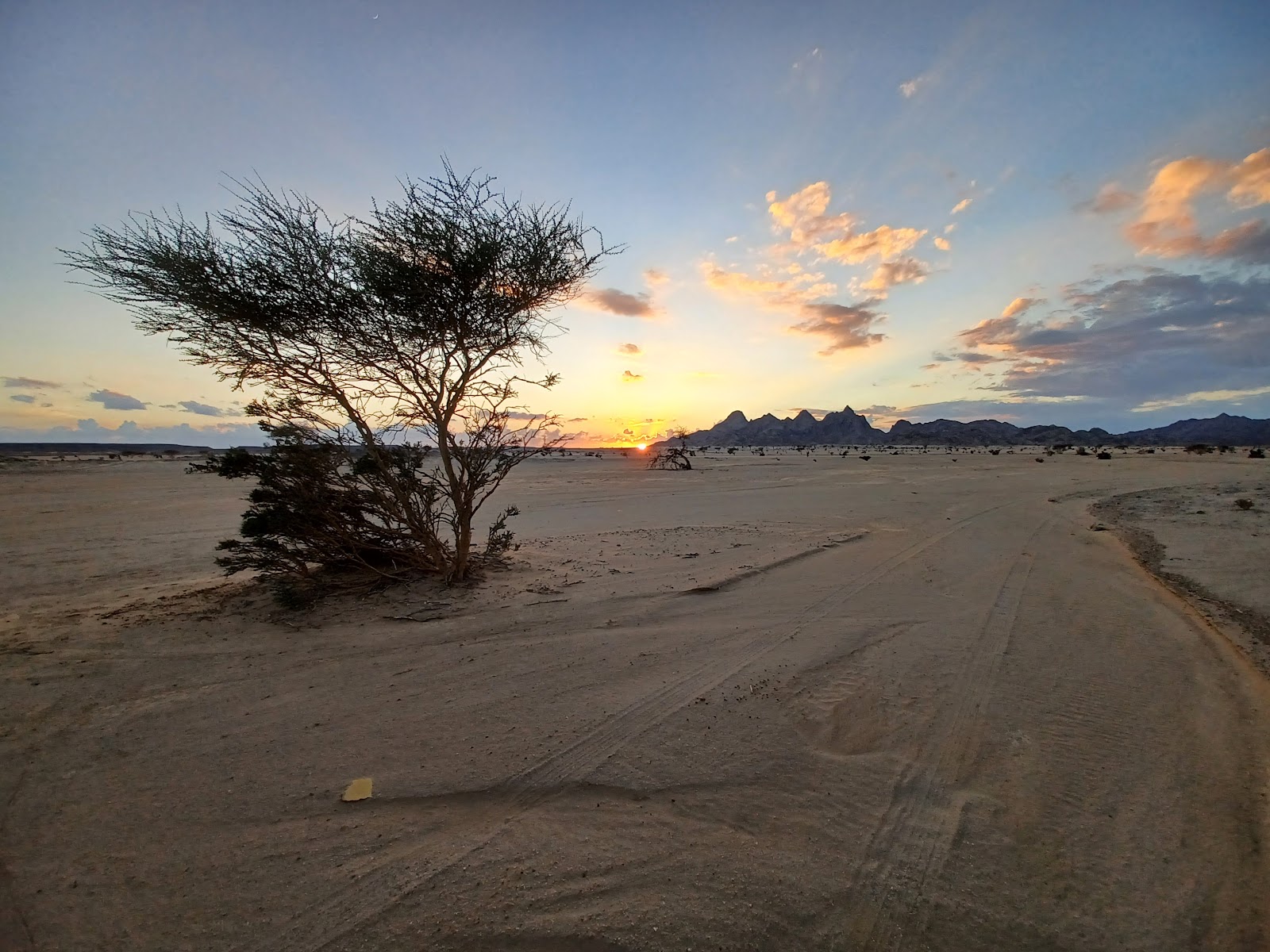
Among the many blessings of walking is that, even after setting our compass bearing for a distant landmark such as a mountain peak, we would have to select a new landmark every few hours because the previous one had come too close. By midmorning we could not see where we had set off from. We drew an important life lesson from this: even something small like a single step, done repeatedly, takes one great distances in less time than one imagines. Walking taught us something about the rewards of patience.
On the morning of the third day, the edge of the dead end road sat before us. We celebrated that evening in camp, safe in the knowledge that the most logistically challenging section of the journey was behind us.
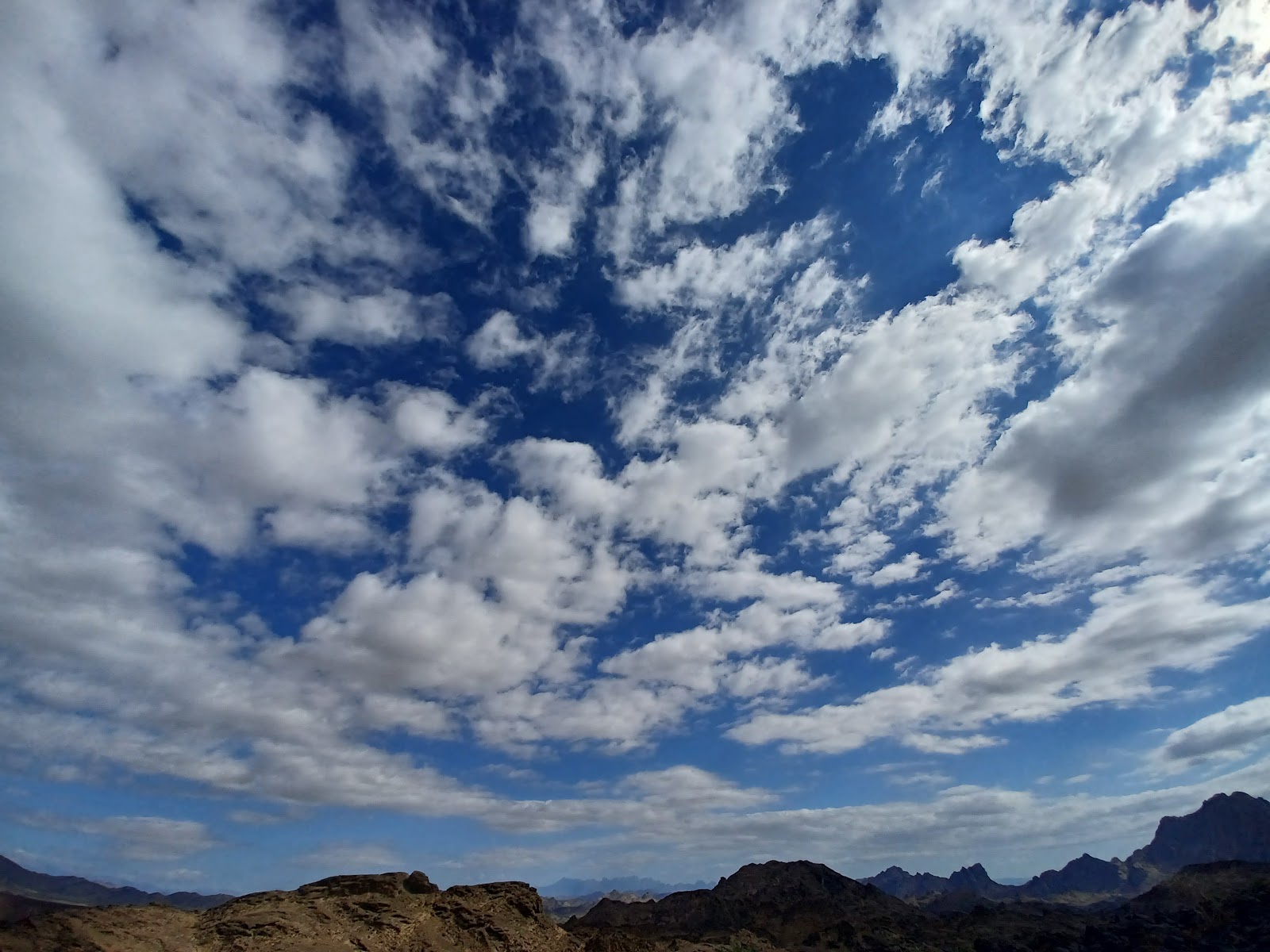
The Issue of Food
The hike taught us something about abstemious eating. Regardless of how much one tries to eat on such an endeavor, one is always in a calorie deficit. But because we were mostly in a fat burning state, we were assured by the knowledge that a lean person has over 100,000 calories stored as fat while less than 2,000 calories stored as glycogen. We learned the lesson that one needs a lot less food than one imagines. A 17-day hike smooths consumption patterns after the first few days and one learns a great deal about one’s actual physical needs, putting the lie to the standard received wisdom on the need for daily calorie replacement.
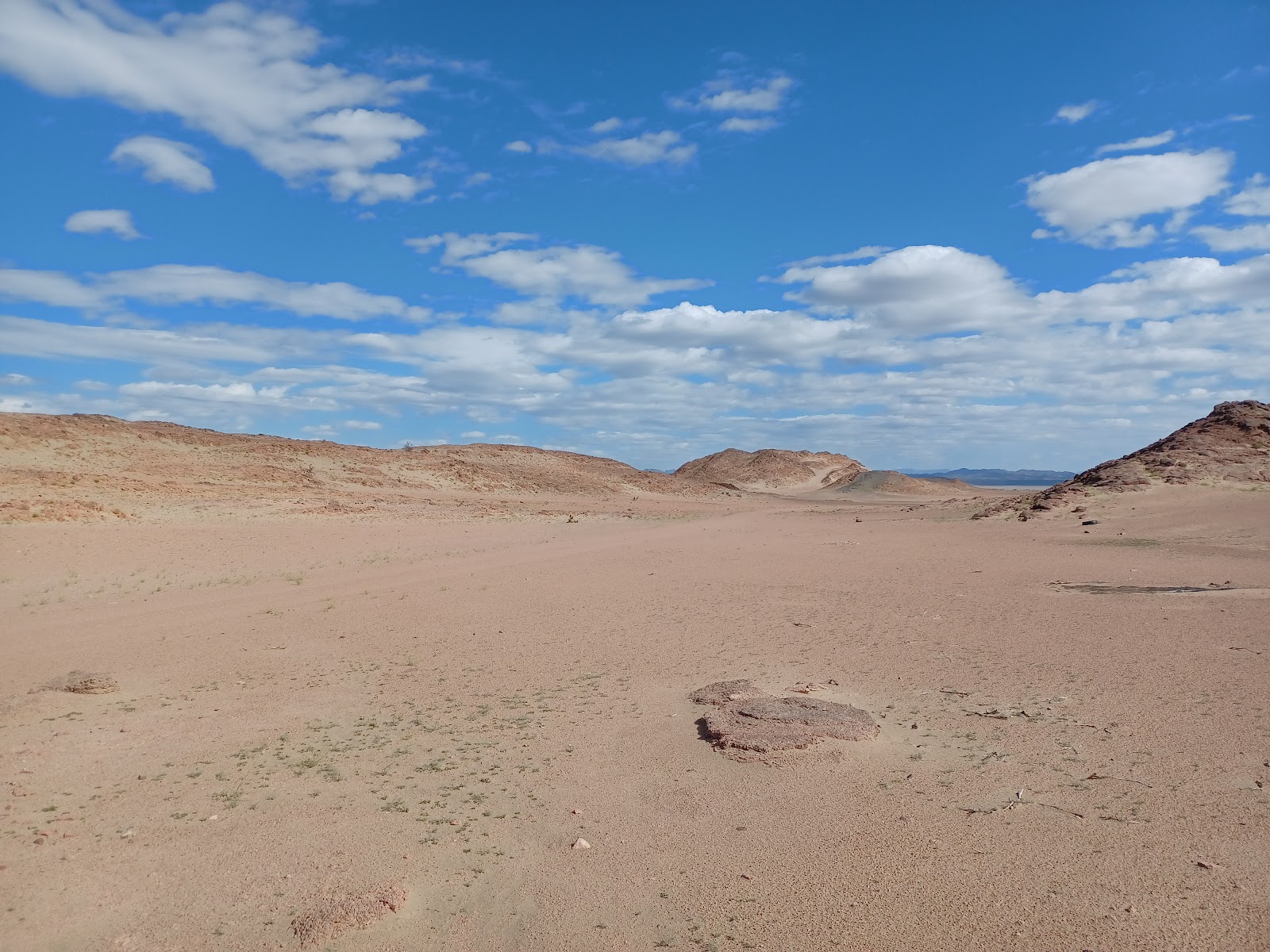
We had estimated 2 lbs of food per day which, at a caloric density of about 125 calories per ounce, works out to 4,000 calories per day. However, based on an approximate 400 calories per hour walking 2.5 to 3.7 mph (4 to 6 km/h) steadily over difficult terrain carrying a full pack, 200 calories per hour pitching and breaking camp, 150 calories per hour sitting, and 100 calories per hour sleeping, our caloric expenditure was much higher.
Looking at the last 4 days (28 mi (45 km) of walking 2.5 mph (4 km/hr) for 3 days, or 11 hours excluding breaks, and 34 miles (55 km) of walking 2.5 mph (4 km/hr) for 1 day, or just under 14 hours excluding breaks, which meant less overall time for rest), this worked out to 6,000 to 7,000 calories per day. Without a doubt, we were not eating this much. We experienced ordinary hunger, but no one in the group experienced weakness due to lack of food. In fact, with our standard fare of beans, sardines, cheese, dates, and nuts, we were likely eating far less than 4,000 calories, a caloric deficit greater than 2,000 to 3,000 calories per day. Judging by how we felt, if we had been forced to go with half as many calories, we might have done so. Hunger, as it turns out, is mostly just habit, and eating sparingly, even during something as demanding as a journey of many days on foot, suffices most.
Further Along the Hejaz
The traditional people of the Hejaz we met along the way were of all kinds, but all were special. There was the date farmer who invited us for dinner, gifting us all black and white checkered scarves. There was the teacher who drove his car alongside us in the noon day sun insisting all the while that we come for lunch. When we reached the shop to resupply, he paid for everything without question.
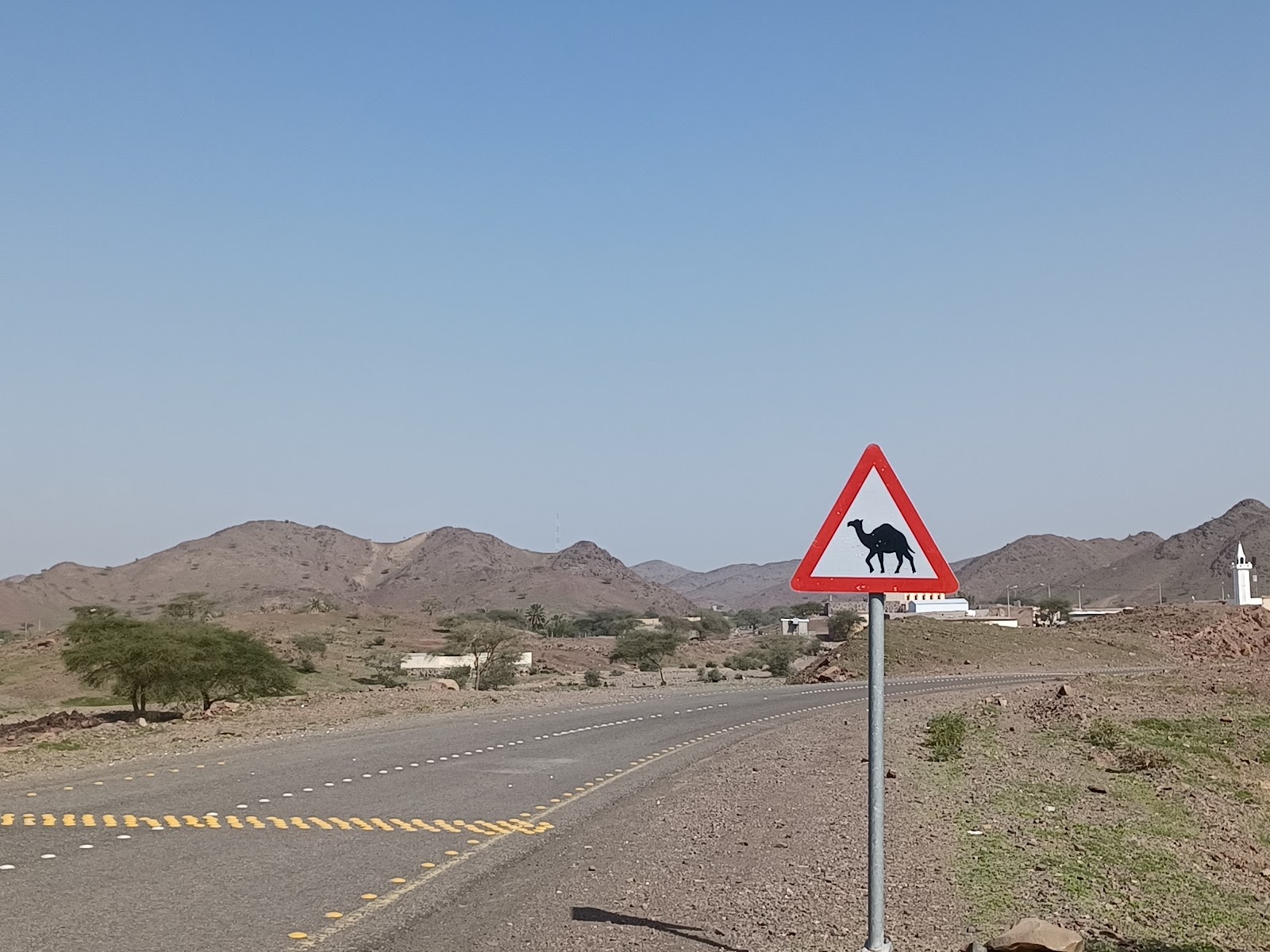
On another occasion we had been trying to find shelter for a break after battling a cold sandstorm from dawn to sunrise. The small town was quiet but, quite miraculously, we came to an open door in which an august man sat before a wood burning fireplace. He invited us in and, with sand still grinding at our teeth, and cold from the morning, it was bliss to drink warm milk and eat dates. We politely declined breakfast as we did not have the hour or so it might take. Later, he would send a packed breakfast to our next break.
There was the man in the dilapidated truck who paid for our lunch and drove off. There were the migrant workers who would try to hand us money thinking we were poor, on one occasion an entire day’s wage and on another occasion bringing us a welcome hot lunch. There were the factory workers who gave us access to their kitchen and bathroom, all a much needed luxury after days on the trail. And there was the police officer who had said with a smile, “If you need water or food, just call 911.”
Alongside the route, sometimes in the middle of nowhere, there would be tiny mosques the size of a room, or rest houses, invariably with the key left on the outside. These were a welcome relief from the elements and a reminder of the generosity that embodied these people. Hikers are a rare sight in many parts of the world, so it is often an exciting spectacle for locals to see nine vagabonds tramping across the desert.
On the last day, we slowly made our way towards the end of our journey, walking into town, a patina of ochre lava dust on our packs, shirts discolored by sun and cuffs tattered by terrain, faces weather beaten. We found something in the desert beyond ourselves; something that gave new meaning to our lives; a new perspective transcendent beyond mere materiality.
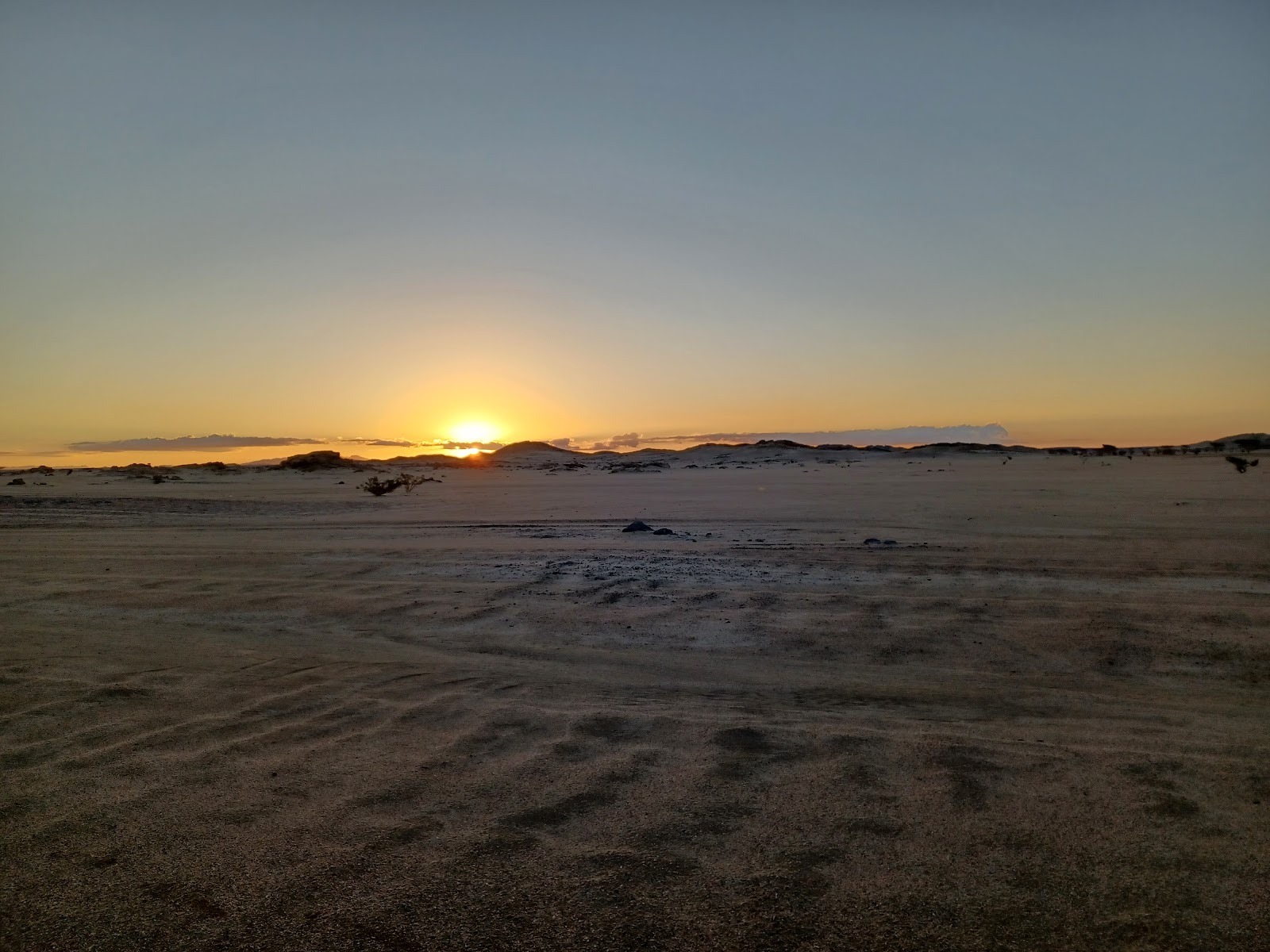
Amid this introspection to lift our horizons and see beyond this world, a lady walked up to us and asked, “Did you just come across the desert?” Nodding wearily, “Yes.” “Did you walk the whole way?” “Yes.” And then she mentioned the unmentionable. “You guys are all over Tik Tok.” A mocking riposte. And a sobering reminder that we were back in the world.

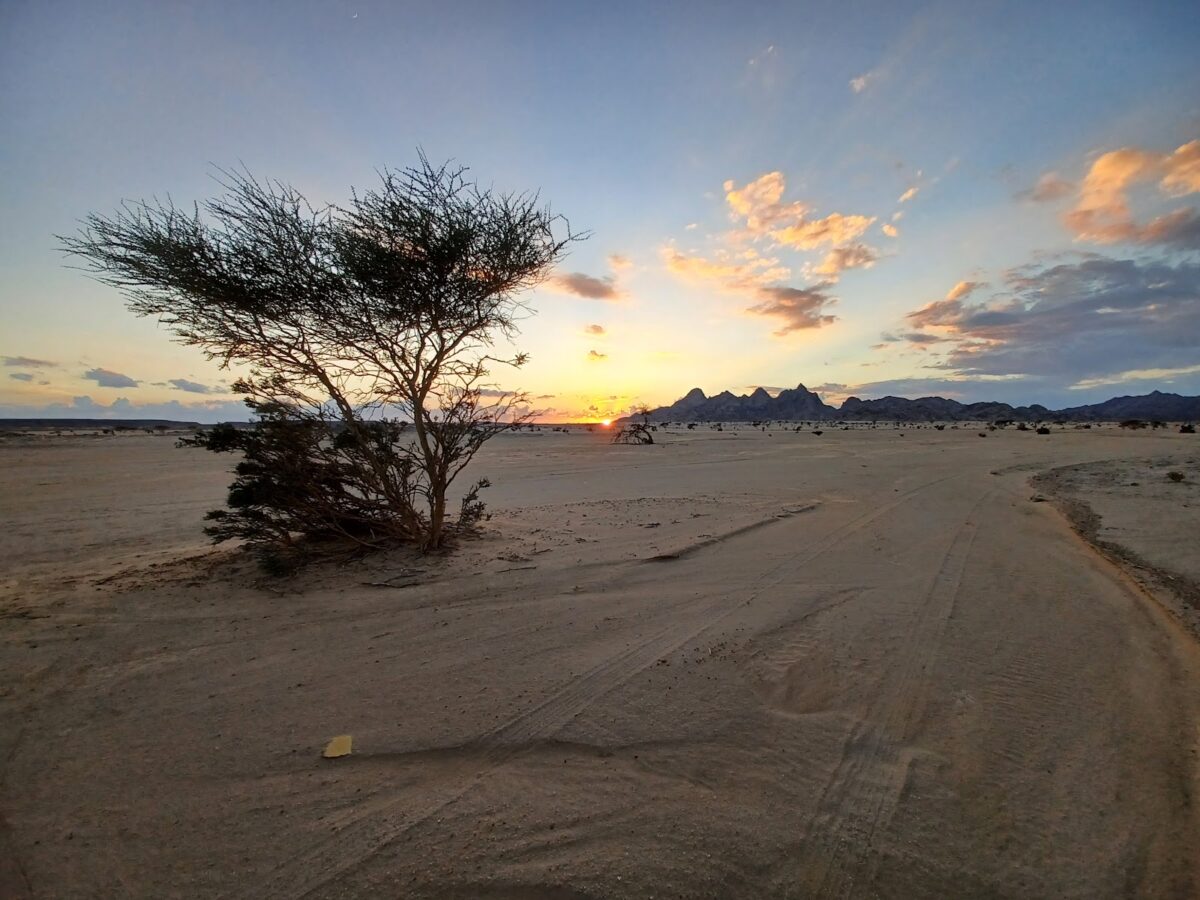


Home › Forums › Desert Crossing